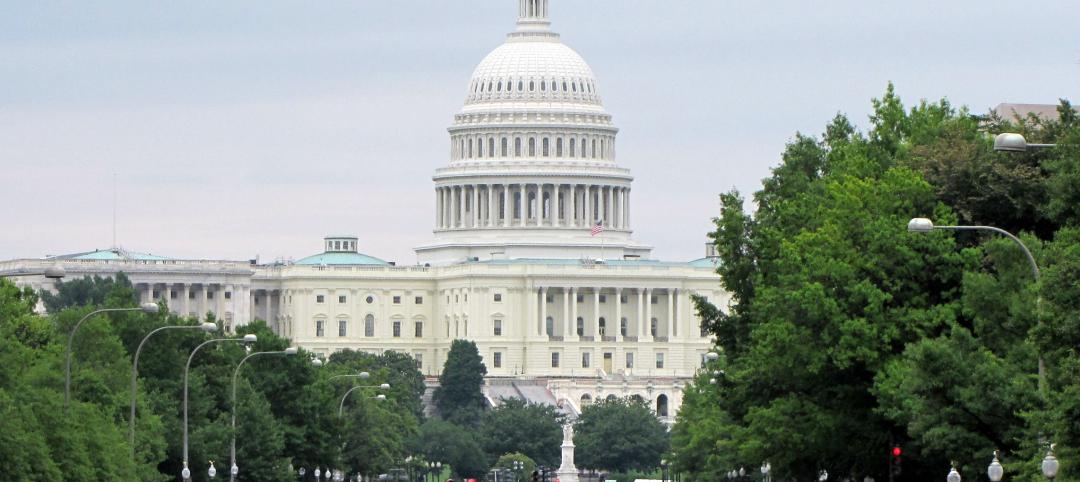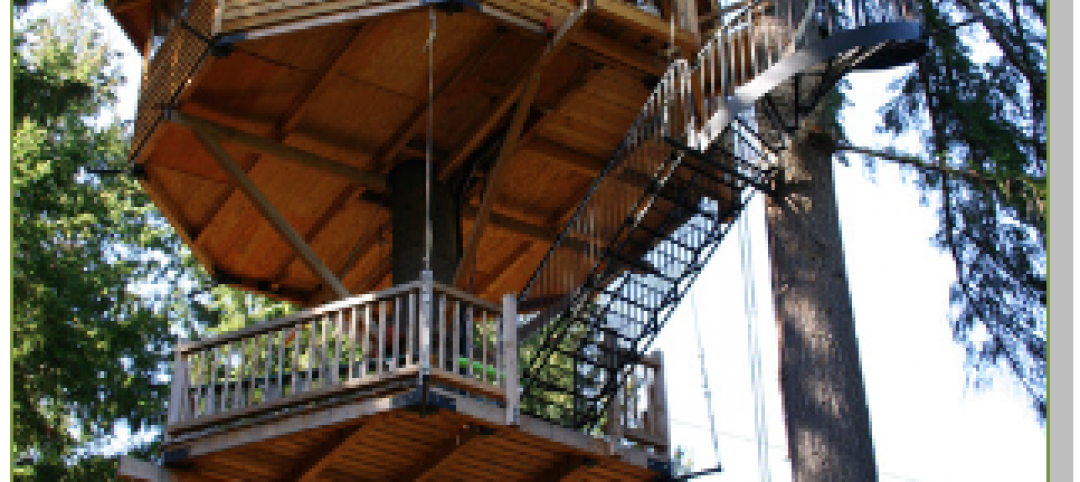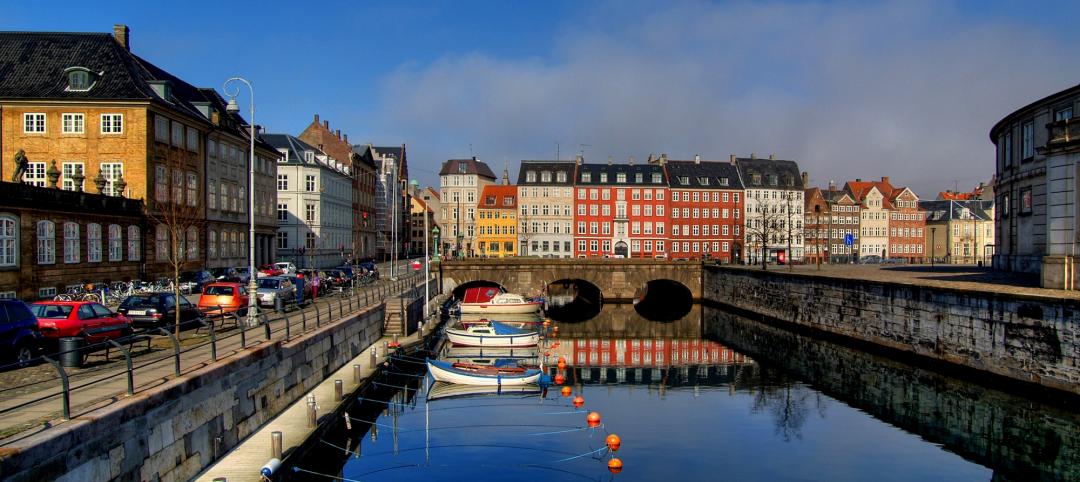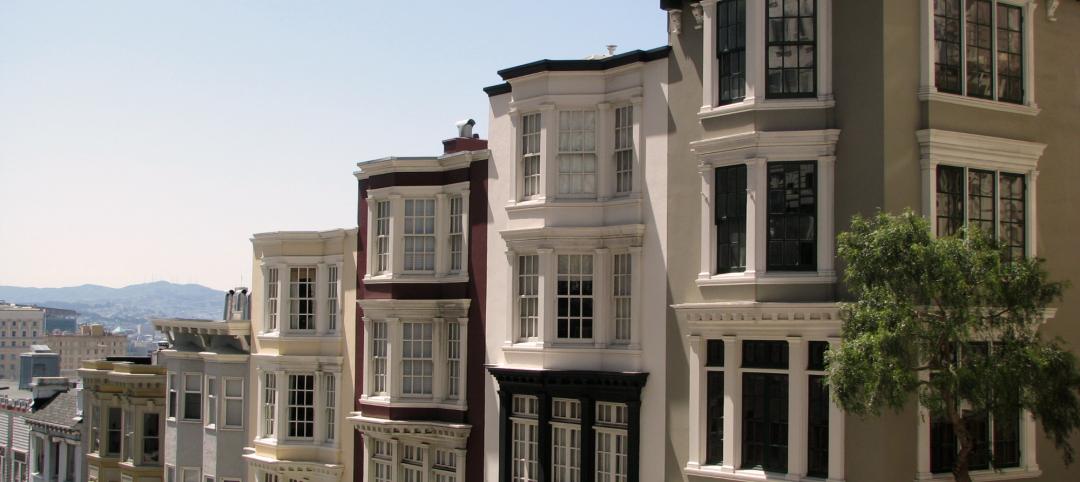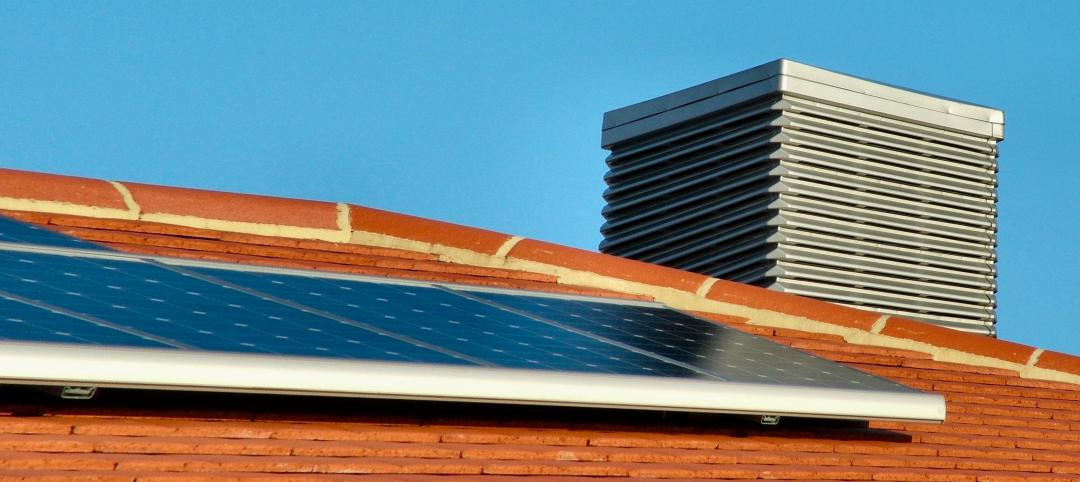 |
|||||||||||||||||||||||||
| The $9.2 billion CityCenter complex in Las Vegas is the nation’s largest privately funded development. Key: A. Mandarin Oriental (Kohn Pedersen Fox Associates); B. Veer (Murphy/Jahn Architects); C. Crystals (Studio Daniel Libeskind); D. The Harmon (Foster + Partners); E. People mover (Gensler); F. Vdara (Rafael Viñoly Architects); G. Aria (Pelli Clarke Pelli); H. Convention Center (Pelli Clarke Pelli); I. Cirque du Soleil theater (Pelli Clarke Pelli). | |||||||||||||||||||||||||
It's early June, in Las Vegas, which means it's very hot, and I am coming to the end of a hardhat tour of the $9.2 billion CityCenter development, a tour that began in the air-conditioned comfort of the project's immense sales center just off the famed Las Vegas Strip and ended on a rooftop overlooking the largest privately funded development in the U.S. and one of the largest construction projects in the world. Only from such a height can you take in the enormity of this 18.6 million-sf mixed-use project. The statistics are staggering: a massive joint venture
It goes without saying that looking at the scale model of the project in the sales office just doesn't do justice to CityCenter. Thus I find myself atop the Bellagio Hotel parking garage, chatting with several architects from the Las Vegas office of San Francisco-based Gensler, the project's master architect. The newly constructed garage borders CityCenter and offers a bird's-eye view into the heart of the project, and it is from this vantage point that I begin to appreciate just how different CityCenter is from anything ever built in Las Vegas.
Apparently my response to the project is not unique. “People don't really understand it or feel it until they walk through it,” says Sven Van Assche, VP of MGM Design Group. “It's experiential, the progression of taking yourself through the project, going from neighborhood to neighborhood, from experience to experience,” he says. “We are doing something so different from what we've done before, something outside our own box.” Van Assche acknowledges how a project of this scale could easily become intimidating and overwhelming, emotions at odds with MGM Mirage's core business of providing hospitality. He worked with New York-based Ehrenkrantz Eckstut and Kuhn Architects to create a master plan that broke down the project's scale into three neighborhoods with the unpoetic titles Blocks A, B, and C. The goal, according to Van Assche: “to make being in CityCenter a more inviting, comfortable, and welcoming experience for the customer.” The concept of neighborhood reinforces CityCenter's urban aspirations. Van Assche, sounding very much like a disciple of Jane Jacobs, says that a walk around a city like New York produces multiple experiences that come from encountering diverse building types—stores, restaurants, hotels, housing, entertainment venues—with surprises around every corner. “What makes great cities so much fun is their diversity and energy,” says Van Assche. “We're trying to create that energy.” Creating a real-city vibe through a diverse product mix led Van Assche to seek out world-class architects who hadn't previously worked in Las Vegas, each of whom could all add something new and exciting to the mix. Van Assche says he sought designers with global reputations and the ability to work as a cohesive team. “It was about finding the most creative architects who could fit the vision we were trying to achieve,” he says. “They've been successful in doing enormously creative work around the world, and they've done so in an architectural vernacular we were interested in ourselves,” says Van Assche. Before anyone signed on, however, Van Assche made sure they checked their egos at the airport. “They had to be interested in being part of a project where it wasn't all about them,” he says. “They needed to understand how intimately we were going to integrate these buildings with one another, and that they would have to collaborate with people who are normally their competitors.” The bottom line: “The synergy had to be positive.” A two-month-long design review helped sort out the assignments: Pelli Clark Pelli was awarded the Aria hotel, casino, convention center, and Cirque du Soleil theatre; Rafael Viñoly Architects, the Vdara condo hotel; Kohn Pedersen Fox Associates, the Mandarin Oriental; Murphy/Jahn, the Veer condominium towers; Foster + Partners, The Harmon hotel and residential tower; and Studio Daniel Libeskind, Crystals retail complex. Each firm was granted significant autonomy over their respective projects as long as they worked within the contemporary aesthetic that MGM Mirage wanted. “The architects all created buildings that are very unique unto themselves, but they did it all using the same ingredients,” says Van Assche. |
Related Stories
| Sep 12, 2011
Living Buildings: Are AEC Firms up to the Challenge?
Modular Architecture > You’ve done a LEED Gold or two, maybe even a LEED Platinum. But are you and your firm ready to take on the Living Building Challenge? Think twice before you say yes.
| Sep 12, 2011
Putting a stamp on USPS's first green roof
The Morgan Building roof totals 150,000-sf. In addition to a vegetated green roof, other roof areas were upgraded and included 55,000-sf of reflective concrete pavers and ballast, which were also placed over a Sarnafil waterproofing membrane, and 40,000-sf of EnergySmart Roof—a reflective, energy-efficient vinyl roofing system from Sika Sarnafil.
| Jul 22, 2011
High-performance windows and doors
Learning objectives After reading this article, you should be able to: Understand issues of thermal performance and energy efficiency in relation to window and door systems; describe optimal detailing of the window-wall interface and how it contributes to building performance, sustainability, and occupant well-being; understand how durability contributes to sustainable windows/doors; and list sustainable O&M requirements for window and door systems.
| Jun 30, 2011
Balancing cost and energy performance in net-zero buildings
BD+C Editorial Director Robert Cassidy talks with The Weidt Group's David Eijadi, FAIA, about the cost of producing net-zero buildings.









